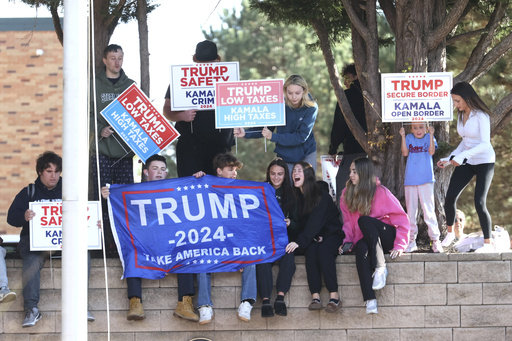Young Voters Show Mixed Support for Trump in Recent Election
In the recent election, Americans aged 18 to 29 leaned towards President-elect Donald Trump, demonstrating distinct priorities and perspectives compared to older conservatives and many established Republican leaders. Trump captured nearly half of the votes from this demographic, a significant increase from about one-third in the previous election cycle, according to recent polling data. Although this age group constituted approximately 15% of his overall support, their backing was comparable to that received by Vice President Kamala Harris, the Democratic nominee.
Current analysis indicates that the economic landscape attracted younger voters more than the issue of immigration did. This younger cohort expressed alarm over climate change and showed a preference for increased governmental roles in healthcare and the cancellation of student debt. These findings could steer Trump’s agenda for a forthcoming term, influencing Republican strategies as they approach the upcoming midterm elections in 2026 and the presidential race in 2028. Historically, the GOP has resisted extensive initiatives on climate issues, healthcare, and student debt—focusing instead on policies Trump has pledged to pursue, such as large-scale deportations and aggressive tariffs, proposals that mainstream economists warn could inflate costs and jeopardize jobs.
Political consultant Barrett Marson from Arizona remarked on the prevailing economic concerns that seem to have taken precedence over other issues. He noted that Trump’s rhetoric did not deter younger voters from supporting him this time around. “It appears economic considerations have outweighed everything else,” Marson stated. If Trump can deliver on his economic commitments, it remains to be seen whether young voters will continue their support for the Republicans, a question still unanswered.
An analysis of ideologies reveals that while Trump gained traction among younger voters, it was not accompanied by a substantial ideological transformation. Approximately half of Trump’s supporters under age 30 identified as somewhat or very conservative, in stark contrast to about 80% of older Trump supporters aged 65 and above. Although many young Trump supporters resonated with the “Make America Great Again” slogan, they were less inclined to be labeled as MAGA Republicans when compared to their older counterparts.
The motivations driving younger voters also differ markedly from those of the older demographic. About 60% of Trump voters aged 65 and older prioritized the situation at the U.S.-Mexico border as their primary voting issue, while only one-third of younger Trump voters viewed it similarly. The economy emerged as the leading concern for nearly half of younger voters, compared to around 40% of older Trump supporters who felt the same.
Looking ahead, a second Trump term might aim to cut down on government services, including programs like the Affordable Care Act subsidies; however, this could alienate his younger backers. Opinions among young Trump voters regarding government intervention in individual issues were nearly evenly divided, with just under half favoring more government action to solve public problems. This contrasts sharply with the older demographic, where only about 20% supported increased government involvement.
Health care and student debt are emerging as critical issues that could cause friction between Trump and his younger supporters. Over half of young Trump voters advocate for greater government involvement in health care, while only 30% of older Trump voters endorse this notion. On the topic of student loan forgiveness, nearly half of the younger voters expressed support for government actions to alleviate debt burdens, contrasting with just 10% of older Trump supporters.
Additionally, climate change stands out as a pressing concern for younger voters. Nearly 60% of Trump supporters under 30 expressed worry over climate issues in their communities, whereas this was true for only 30% of older supporters. Young voters are noticeably more divided on U.S. energy policies, with a significant portion advocating for renewable energy investments that may contradict Trump’s promises to reverse existing measures. Just over half of younger Trump voters preferred increased fossil fuel production, while about 40% supported expanding alternative energy use.
On issues surrounding tariffs and immigration policies, younger voters displayed different sentiments compared to their older counterparts. Close to half of younger Trump supporters opposed tariffs, while a significant majority of older supporters supported them. Furthermore, younger Trump supporters were more inclined to believe that undocumented immigrants should be granted opportunities to apply for legal status, a perspective that saw stark differences when compared to the more traditional views held by older supporters.



